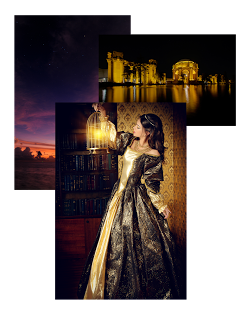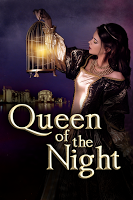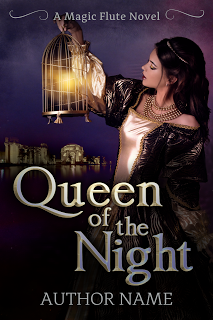Creating a Unique Cover Design
Welcome to Day 3 of Indie eCon 2017! There are a lot of other resources on a wide variety of topics on the blog of our awesome coordinator Kendra E. Ardnek. I also have another post over there today so don't forget to check it out too! :)

By Rachel Rossano
The first key to creating a unique cover design is to focus on your story. Know its genre, characters, themes, and feel. Your book will be different than anything anyone else has ever written because you wrote it. Figure out those differences and make sure they’re expressed in your cover.
The second step, although it might feel like a step backward from originality, is to spend time browsing covers of similar books in your genre. You need to get a feel for the general look readers are going to expect. Your readers should to know the genre of the book almost immediately when they first see your cover. Learning what will work and what won’t is a good starting point, but keep your mind open to the possibility that the design, like your story, might turn out slightly different than planned.
 Next, you’ll need to look for a starting place. My first step as a designer, after getting to know my client and their book, is to go looking for an image as a starting place. Browse stock image sites. Whether it’s a character, a setting, a color scheme, or an atmosphere, you need to find a piece of visual inspiration to get you going and an anchor around which to build your cover.
Next, you’ll need to look for a starting place. My first step as a designer, after getting to know my client and their book, is to go looking for an image as a starting place. Browse stock image sites. Whether it’s a character, a setting, a color scheme, or an atmosphere, you need to find a piece of visual inspiration to get you going and an anchor around which to build your cover.
Once you have your inspiration piece selected, it’s time to build the rest of the cover. Use elements that enhance and add to the visual storytelling, but don’t overdo it. Overly crowded covers can be eyesores and could give the wrong expectations of the book inside. Remember, this is going to be your readers’ first impression of your book. You want it to be professional and appealing.
 After finding all of your elements, I suggest you assemble them in a rough layout so you can get a feel for how everything is going to work together.
After finding all of your elements, I suggest you assemble them in a rough layout so you can get a feel for how everything is going to work together.
 Now, it’s time to play with fonts. Keep it unique, but readable. Legibility is key. Also, the title needs to take up about a third to a fifth of the cover image for it to be visible when the cover is on Amazon and other websites that shrink it down to a thumbnail size for their listings. Also, try to keep the number of fonts down to one or two. Too many will give the cover a sloppy or overdone look. Balance simplicity and detail. Typography is a challenge all its own.
Now, it’s time to play with fonts. Keep it unique, but readable. Legibility is key. Also, the title needs to take up about a third to a fifth of the cover image for it to be visible when the cover is on Amazon and other websites that shrink it down to a thumbnail size for their listings. Also, try to keep the number of fonts down to one or two. Too many will give the cover a sloppy or overdone look. Balance simplicity and detail. Typography is a challenge all its own.
Last of all, tweak the cover to the point of perfection. Clean up the edges and double check color, spelling, and other aspects. Sometimes the tiny nudge of an element can do wonders for the overall appearance. Once you’re finished with your first draft, I recommend running your cover by a designer and a reader you trust to give you honest feedback. Don’t present it to a committee unless you’re clear on your vision and not easily swayed by highly personalized advice. Listen and evaluate the input before letting the cover sit for a day. Then, if you’re still in love with it, and confident that it will do your book justice, I think you have a winner that’s ready for use.
Once you’re finished with your first draft, I recommend running your cover by a designer and a reader you trust to give you honest feedback. Don’t present it to a committee unless you’re clear on your vision and not easily swayed by highly personalized advice. Listen and evaluate the input before letting the cover sit for a day. Then, if you’re still in love with it, and confident that it will do your book justice, I think you have a winner that’s ready for use.
* The cover used in this article is not finished completely and for demonstration only. If you are interested in it or something similar, contact me.
About the Rachel Rossano When Rachel Rossano isn't absorbed in writing and publishing books, she designs covers and other art for herself and other authors under the business name Rossano Designs. With over fifteen years of experience in the indie publishing business, she has seen and learned a lot. Always eager to help other authors, she loves talking shop, whether it is writing or design.
When Rachel Rossano isn't absorbed in writing and publishing books, she designs covers and other art for herself and other authors under the business name Rossano Designs. With over fifteen years of experience in the indie publishing business, she has seen and learned a lot. Always eager to help other authors, she loves talking shop, whether it is writing or design.
Author Rachel Rossano
Blog ~ Twitter ~ Facebook ~ YouTube ~ GoodReads
Rossano Designs
Website ~ Facebook

By Rachel Rossano
The first key to creating a unique cover design is to focus on your story. Know its genre, characters, themes, and feel. Your book will be different than anything anyone else has ever written because you wrote it. Figure out those differences and make sure they’re expressed in your cover.
The second step, although it might feel like a step backward from originality, is to spend time browsing covers of similar books in your genre. You need to get a feel for the general look readers are going to expect. Your readers should to know the genre of the book almost immediately when they first see your cover. Learning what will work and what won’t is a good starting point, but keep your mind open to the possibility that the design, like your story, might turn out slightly different than planned.
 Next, you’ll need to look for a starting place. My first step as a designer, after getting to know my client and their book, is to go looking for an image as a starting place. Browse stock image sites. Whether it’s a character, a setting, a color scheme, or an atmosphere, you need to find a piece of visual inspiration to get you going and an anchor around which to build your cover.
Next, you’ll need to look for a starting place. My first step as a designer, after getting to know my client and their book, is to go looking for an image as a starting place. Browse stock image sites. Whether it’s a character, a setting, a color scheme, or an atmosphere, you need to find a piece of visual inspiration to get you going and an anchor around which to build your cover.Once you have your inspiration piece selected, it’s time to build the rest of the cover. Use elements that enhance and add to the visual storytelling, but don’t overdo it. Overly crowded covers can be eyesores and could give the wrong expectations of the book inside. Remember, this is going to be your readers’ first impression of your book. You want it to be professional and appealing.
 After finding all of your elements, I suggest you assemble them in a rough layout so you can get a feel for how everything is going to work together.
After finding all of your elements, I suggest you assemble them in a rough layout so you can get a feel for how everything is going to work together. Now, it’s time to play with fonts. Keep it unique, but readable. Legibility is key. Also, the title needs to take up about a third to a fifth of the cover image for it to be visible when the cover is on Amazon and other websites that shrink it down to a thumbnail size for their listings. Also, try to keep the number of fonts down to one or two. Too many will give the cover a sloppy or overdone look. Balance simplicity and detail. Typography is a challenge all its own.
Now, it’s time to play with fonts. Keep it unique, but readable. Legibility is key. Also, the title needs to take up about a third to a fifth of the cover image for it to be visible when the cover is on Amazon and other websites that shrink it down to a thumbnail size for their listings. Also, try to keep the number of fonts down to one or two. Too many will give the cover a sloppy or overdone look. Balance simplicity and detail. Typography is a challenge all its own.Last of all, tweak the cover to the point of perfection. Clean up the edges and double check color, spelling, and other aspects. Sometimes the tiny nudge of an element can do wonders for the overall appearance.
 Once you’re finished with your first draft, I recommend running your cover by a designer and a reader you trust to give you honest feedback. Don’t present it to a committee unless you’re clear on your vision and not easily swayed by highly personalized advice. Listen and evaluate the input before letting the cover sit for a day. Then, if you’re still in love with it, and confident that it will do your book justice, I think you have a winner that’s ready for use.
Once you’re finished with your first draft, I recommend running your cover by a designer and a reader you trust to give you honest feedback. Don’t present it to a committee unless you’re clear on your vision and not easily swayed by highly personalized advice. Listen and evaluate the input before letting the cover sit for a day. Then, if you’re still in love with it, and confident that it will do your book justice, I think you have a winner that’s ready for use.* The cover used in this article is not finished completely and for demonstration only. If you are interested in it or something similar, contact me.
About the Rachel Rossano
 When Rachel Rossano isn't absorbed in writing and publishing books, she designs covers and other art for herself and other authors under the business name Rossano Designs. With over fifteen years of experience in the indie publishing business, she has seen and learned a lot. Always eager to help other authors, she loves talking shop, whether it is writing or design.
When Rachel Rossano isn't absorbed in writing and publishing books, she designs covers and other art for herself and other authors under the business name Rossano Designs. With over fifteen years of experience in the indie publishing business, she has seen and learned a lot. Always eager to help other authors, she loves talking shop, whether it is writing or design. Author Rachel Rossano
Blog ~ Twitter ~ Facebook ~ YouTube ~ GoodReads
Rossano Designs
Website ~ Facebook
Published on March 22, 2017 06:00
No comments have been added yet.



